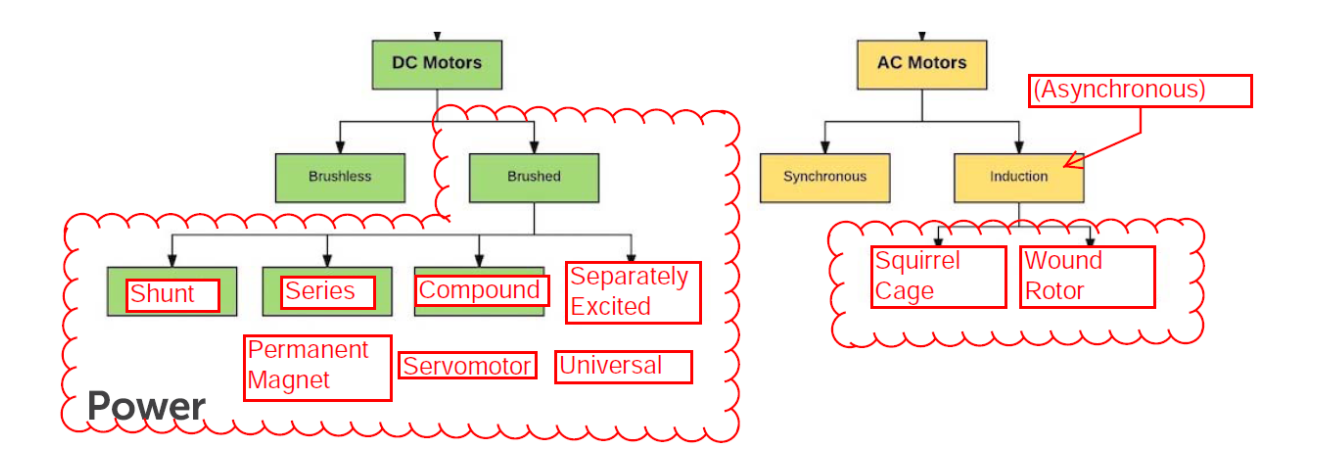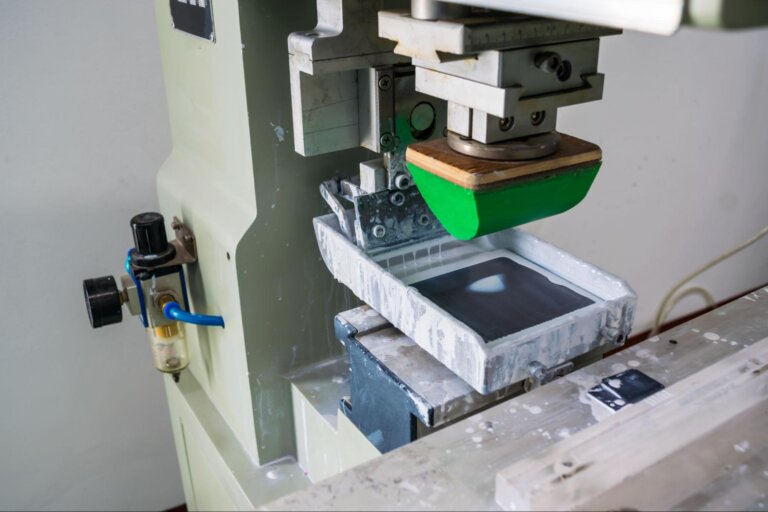Time to read: 6 min
While electric motors drive vastly different applications, their core function remains the same—to convert electrical energy into mechanical energy. Numerous articles highlight the characteristics of each unique motor on the market, but they can be simplified into two overarching categories: AC (alternating current) motors and DC (direct current) motors.
Each type has its own pros and cons, and this article is intended to give you a clear picture of how either an AC or DC motor can best suit your application. Let’s explore the ways in which they each convert electrical energy, the differences in their construction, and the best use cases for each type.

Power
The glaring difference between the two types of motors is the power off which they run.
With AC electricity, or alternating current, the voltage reverses every half cycle, which in turn changes the direction of the current. This is done by alternating the polarity at each end of a wire. So, if you take the U.S. standard of 120V/60Hz supply, there are approximately 120 half cycles per second.
With DC electricity, or direct current, the flow of current must remain in a single direction (positive to negative), so voltage must remain constant, in order to keep a steady flow of current. You can think of DC electricity as a battery with clearly marked negative and positive terminals.
AC Electricity for Motors
Inside a wire using AC electricity, electrons don’t travel at a consistent rate in a single direction as they would with DC—they simply wiggle back and forth and pass along energy (think of Newton’s Cradle).
Alternating current is used for power distribution systems (power to your home/office), for the simple reason that power transmission is much more efficient at higher voltages, and back in the day, AC transformers significantly advantaged DC voltage converters. However, advances in power electronics have made High Voltage Direct Current (HVDC) a new trend. Why are AC transformers preferred? Because the back-and-forth “wiggling” of electrons creates an electrical field, so a transformer can be used to kick up the voltage and in order to keep current relatively low.
And by keeping current low, resistance through the wire is reduced, which equates to a higher efficiency. This correlation between resistance and voltage can be found in the Power Law: Power = Current * (Resistance)^2.
So what does all of that have to do with an AC motor? Well, basically, AC motors are great for applications that require little precision, like a blender or your washing machine. They’re objects you need to start, and they may ramp up or down in speed, but the difference between 400 RPM and 420 RPM probably isn’t critical.
DC Electricity for Motors
DC motors, on the other hand, are all about precision and stability, because the DC power supplying these motors comes in at a constant voltage. The electrons inside the wire can only travel in a single direction, and they do so at a normally steady pace.
Again, this is similar to the way a triple A battery will constantly give your electronics a supply of 1.5V (excluding losses) until they die. This is better when you have delicate circuitry/circuit boards or electronics that need a steady supply of energy to function properly, like a laptop.
But wait—if my home is supplying AC power, but my product requires DC power, what do I do?! Most electronics will have an AC to DC converter. That’s what that block is on the power cord for your laptop.
In fact, you can thank the converter on a sewing machine for the inspiration behind the band AC/DC’s name. With a DC motor, you can simply control the speed by adjusting the voltage, as speed is proportional to the voltage applied to the armature.
Construction
While the working principle of both AC and DC motors is the same (one magnetic field chasing another magnetic field), and their externals may not be noticeably different, there are some fundamental differences internally that make them each unique. While you’re reading the following information, keep in mind that the difference is driven by their input/output: AC motors take in an alternating voltage for the sake of efficiency and power, while DC motors maintain a constant voltage for stability.
AC Motor Build
AC motors are very simple because the alternating current does all the work. By injecting current through a stationary winding in the casing that surrounds the shaft, you’re creating a varying magnetic field, which induces a current on the shaft or rotor. This conversely generates a magnetic field that constantly tries to align with the magnetic field of the stationary winding, in turn causing the shaft to rotate.
Thus, their speed is associated with the amount of slip, or lag in their magnetic fields trying to catch up, which is defined by the motor’s construction.
Remember, AC electricity goes from “positive voltage” to 0 to “negative voltage” at double your frequency (Hz) every second. This means that with the U.S. standard of 60Hz, the current changes direction 120 times a second.
AC motors’ simplicity makes them long-lasting and significantly reduces the chances of mechanical error. However, their startup currents are typically around six to nine times the steady state current. The mix between efficiency and long shelf life makes them popular for applications where you don’t want too much energy loss and don’t want to be constantly replacing a motor (think washing machines). However, I depend on my washing machine enough that I’d probably pay every year to get a new one if it broke down—don’t tell LG!
DC Motor Build
Since motors inevitably need a rotating magnetic field, and DC current generates a constant magnetic field, their construction is a little more complex. Returning to the battery example we used earlier, we want the battery to supply a consistent 1.5V to our circuit board, instead of the craziness of switching from +1.5 to -1.5V hundreds of times a second that AC power gives us. In that same way way, in order for a DC motor to convert the consistent voltage supplied to it, we need a motor construction that will precisely convert that voltage into mechanical energy.
To do so, we need to first implement some mechanical functionality to create the rotating magnetic field that moves the motor. Again, this was easy with AC motors, because AC power naturally swings back and forth, which varies the magnetic field. With DC, the magnetic field will remain the same.
So, to counter, we have several rotating coils at the center of a DC motor, which connect to a “commutator.” The commutator makes contact with stationary “brushes” of opposite polarities at the exact moment that it needs to change the direction of current to rotate the shaft.
It may be obvious, but the major downside here is loss of efficiency, due to the friction caused by the contact between the commutator and brushes. The loss in efficiency leaves in the form of heat and sometimes sparks if you overload the motor.
Function
If you’re sick of reading all the technical details and really just care about what motor best suits your needs, the long answer is that it boils down to your particular application. As a short answer, here’s a basic list of pros and cons for each type of motor:
Advantages of AC Motors
- Typically more efficient
- Longer life and less chance of failure
- Produces less heat
- Better for high power applications (washers, refrigerators, machinery)
- Can tie directly into a home or office outlet, without a converter
Disadvantages of AC Motors
- High startup current
- Somewhat bulky
- Not practical for portable applications
- Advantages of DC Motors
- Low electromagnetic interference (great for sensitive electronic devices)
- Stability for circuit boards and sensitive electronics
- You can run your product on battery power
- Better speed control
Disadvantages of DC Motors
- Typically more expensive
- Less efficient
- Higher chance of failure (Brushed type)
Main Takeaways
In reality, there will likely be several factors in your design that will drive the type of motor you choose. If you’re using circuit boards, batteries, and require fine tuning on your speed controls, a DC motor is the way to go. If you’re going for high power, efficiency, long lasting, and can connect your product to a wall outlet, an AC motor will do the trick.










